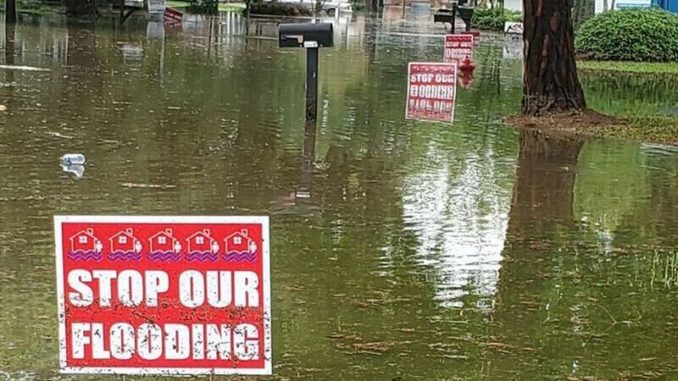
Latter and Blum Realtor Regina Allemand said thus far new flood rate changes have had minimal effects on the local real estate market.
“However, this will not remain the case,” she warned.
The National Flood Insurance Program’s new program – known as Risk Rating 2.0 – went into effect Oct. 1, 2021, meaning new policies beginning Oct. 1 were subject to the new rating methodology. All pre-existing policies renewing on or after April 1, 2022, are subject to the new program.
Flood insurance policies are set to increase 18% per year – the most permitted by federal law – under Risk Rating 2.0 until the policy reaches its peak – a peak of which is still unclear. Flood zones are a thing of the past now, with policy premiums calculated using a set of vague criteria including distance to water – seemingly regardless of a levee system.
Several local home buyers and people researching home builds have reported new policy rates as high as $6,000 a year.
“It is strongly suggested that homeowners have a conversation with their insurance agents to discuss current and future coverage,” Allemand said. “If you currently have a flood policy in place it is important to not let it lapse. This could make or break a sale when you or your heirs go to sell the property. Since October 2021, this has been the case with new sales. If current sellers have had a policy in place it was able to be assumed at current rate. It is important these new buyers understand they too are subject to the increase in premiums.”
New constructions in flood zones will be a tough hurdle, Allemand added.
“These increases will price many people out of being able to purchase a home,” she said. “The real estate industry is lobbying to work with FEMA and others to work out a more palatable solution to protect the industry and home and property owners.”
FEMA representatives have publicly stated that the new program will make flood insurance more affordable for more people. The government website states that Risk Rating 2.0 is “equity in action.”
According to FEMA, over the past 50 years the agency has collected $60 billion in NFIP premiums but has paid $96 billion in costs.
“Taxpayers and policyholders are adversely impacted when the program does not generate the revenue needed to pay claims,” the FEMA website states. “Risk Rating 2.0 will help put the NFIP on solid financial footing by creating a more stable program that is accountable to taxpayers.”
Last week during a hearing on FEMA Priorities for 2022 and the 2022-2026 Strategic Plan in the U.S. House Transportation and Infrastructure Committee, Congressman Garret Graves from Louisiana’s 6th Congressional District questions FEMA Administrator Deanne Criswell on NFIP.
Graves told Criswell that there is nothing equitable about the new rating system, and added that a recent study showed the new system overcharges only Louisiana residents.
“When these folks built their property … they built it at the FEMA base elevation,” Graves said. “They compiled with FEMA standards. This isn’t a car or table that you can just move … this is a house. You can’t move a house.”
Graves added that the state of Louisiana has lost 2,000 squares miles of coast, which has had a huge impact on flooding.
“That’s like the state of Rhode Island being wiped off the map,” he said. “That’s not because of the action of our constituents … it’s largely the responsibility or actions of the federal government that’s done that … we’re draining parts of Canada, New York, Montana and others … one of the largest water sheds in the world … they’re sending us more water. Again, not things we can control, yet you’re charging our constituents for it.”
St. Charles Parish President Matthew Jewell, Graves and members from the St. Charles Parish Council hosted a townhall meeting to discuss Risk Rating 2.0 in March. A FEMA representative was present.
“The new flood insurance rates we are seeing with FEMA’s new Risk Rating 2.0 are unreasonable and are going to hurt our community,” Jewell said at the meeting. “On one hand we have the Corps of Engineers that said a billion-and-a-half dollar levee project is a good thing for this area, and that the cost benefit makes sense. On the other hand, the paradox is that FEMA is basically making it unaffordable to live here.”
Jewell said during the meeting that the new rates were “a slap in the face” to St. Charles Parish residents, as over a decade ago local voters decided to tax themselves to generate increased levee and flood protection. Since then he said over $50 million has been spent on levees, pump stations and flood gates.
“We have been mitigating our risk in St. Charles Parish,” Jewell said, adding that according to the national levee database on the Corps of Engineers website several local levee alignments are listed but detailed as having a 0 foot elevation. “Is that what FEMA is using to model our flood risk?”





Be the first to comment